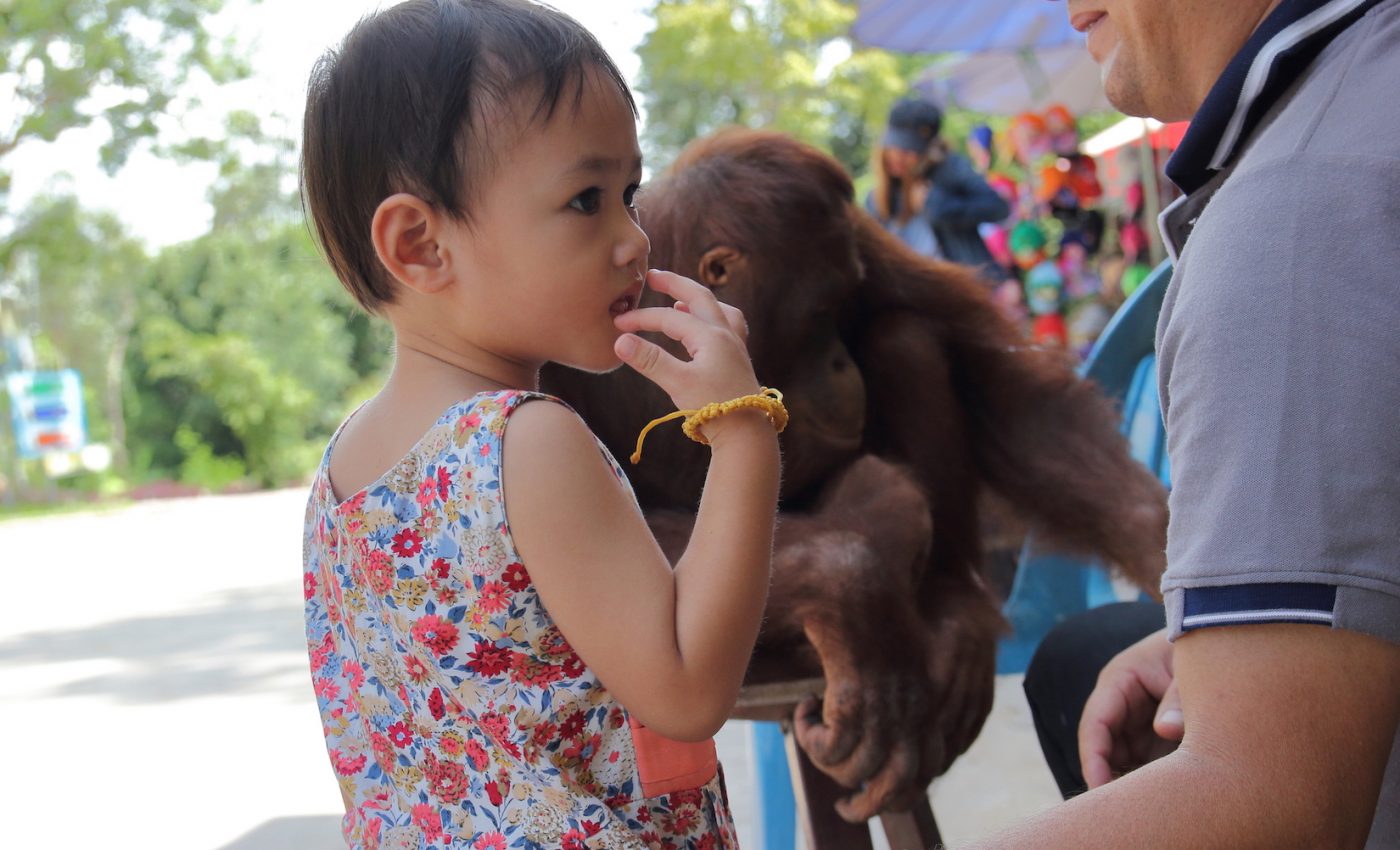
Toddlers and chimps share many of the same gestures to communicate
A recent study published in Animal Cognition has found that toddlers use some of the same gestures as chimpanzees and gorillas to communicate. Of the 52 limb and body movements used by one and two year olds to communicate, many of these movements are also observed in great apes.
“’Wild chimpanzees, gorillas, bonobos and orangutans all use gestures to communicate their day-to-day requests,” says Dr. Catherine Hobaiter of the School of Psychology and Neuroscience at St. Andrews University. “But until now there was always one ape missing from the picture – us.”
In a first of its kind study, Hobaiter’s international team of researchers used the same method of recording gestures for both species. They filmed chimpanzees in the Budongo Forest in Uganda, and recorded 13 young children interacting with their peers, caregivers, and relatives at home, in nurseries, and during shopping trips in Germany and Uganda.
According to Hobaiter, chimpanzees and humans are the only species that have a system of communication where they intentionally send messages to another individual. Analysis of the chimpanzees and children found that, of the 52 distinct gestures used by children, 46 of them are present in the chimpanzees’ communication as well. This included actions such as reaching with an outstretched palm, raising, waving, or shaking the arm, clapping, and shaking or throwing objects.
“‘Of the six remaining, four of the gestures used by children: “Hit self,” “Object on head,” “Rub” and “Tapping self,” are present in the gorilla repertoire and two gestures: “Arm bend” and “Hand wave,” were specific to children,” explains Hobaiter. “Like chimpanzees, children used them both singly, and in sequences, and employed individual gestures flexibly towards different goals. We thought we might find a few of these gestures – reaching out your palm to ask for something or sticking your hand up in the air. But we were amazed to see so many of the “ape” gestures used by the children.”
The researchers found that children used these motions in a similar way to young apes when communicating with parents or peers, and even used combinations to ask for different things. However, there were some distinct differences. For example, children point significantly more than young apes, and it appears that hand waving to say “hello” or “goodbye” is unique to humans.
“Since chimpanzees and humans shared a common ancestor around five to six million years ago, we wanted to know whether our evolutionary history of communication is also reflected in human development,” says first author Dr. Verena Kersken of the University of Gottingen.
While we humans would go on to develop a complex language, these findings show that we still share an ancient gestural heritage.
—
By Connor Ertz, Earth.com Staff Writer













